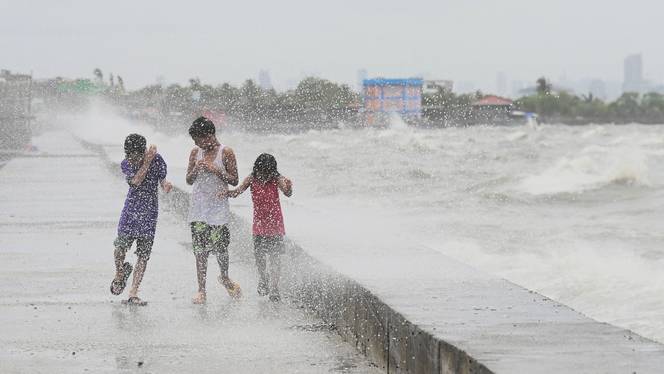Typhoon makes landfall in China as toll rises in the Philippines
By John Yoon, Siyi Zhao, Jason Gutierrez and Mike Ives
MANILA – Typhoon Doksuri made landfall in mainland China on Friday (28), carrying winds equivalent to those of a Category 2 hurricane, after grazing Taiwan and lashing the Philippines, where officials reported dozens of deaths caused by the storm.
The Philippine coast guard said Doksuri’s strong winds had capsized a ferry near Manila on Thursday (27) afternoon, killing at least 26 people. Passengers were panicked by the rough waters, rushed to one side of the vessel and overturned it, said Rear Adm. Armand Balilo of the coast guard. Forty people were rescued.
On Friday, the national disaster agency said at least 13 other people in the Philippines had been killed in flooding and landslides. Doksuri peaked at Category 4 strength Wednesday (26) as it battered the country’s north, blowing roofs off homes and filling villages with neck-deep floodwaters.
The typhoon made landfall in Jinjiang, a city in Fujian province on China’s southeastern coast, on Friday at 9:55 a.m. local time, according to China’s national news broadcaster, CCTV.
Bracing for the storm, Chinese coastal cities have suspended buses, bullet trains, flights and ferries, and have moved tourists to safety. Quanzhou, a larger port city that governs Jinjiang, evacuated nearly 100,000 people and ordered work, school and outdoor activities cancelled. Xiamen, another large coastal city in Fujian province, ordered residents to shelter in place and to keep their vehicles off the streets.
The storm was still bringing strong winds and heavy rain to Taiwan, where much of the island’s south and east had been shuttered. Taiwan’s weather bureau extended rain and wind advisories for the southern regions Friday, including the major port city of Kaohsiung, where business and schools remained closed. As much as 40 inches of rain had fallen in some areas overnight.
Doksuri had a maximum sustained wind speed of 109 mph Friday morning in China, according to the United States military’s Joint Typhoon Warning Centre in Hawaii. That would make it a Category 2 storm on the five-category scale that is used to measure hurricanes in the Atlantic.
The storm, after weakening and then regaining some strength, was moving north at about 11 mph by late morning, the Joint Typhoon Warning Centre said.
Doksuri, meaning “eagle,” is a name contributed to the Typhoon Committee by South Korea. In the Philippines, where the government has used a parallel typhoon naming system for decades, Doksuri is known as Egay.
A tropical cyclone is a storm, typically one with a diameter of a couple of hundred miles, that begins over a tropical ocean and generates violent winds, torrential rain and high waves. The term “hurricane” applies to those that form in the North Atlantic, the northeastern Pacific, the Caribbean Sea or the Gulf of Mexico; “typhoon” applies to ones that develop in the northwestern Pacific and affect Asia.
As Doksuri headed farther inland over China, it drifted away from Hong Kong, which lies off the mainland’s southern coast to the west of Fujian province. Hong Kong officials cancelled storm warning signals for the territory Friday afternoon.
The Philippine disaster agency said Friday that at least 20 people were still missing in Doksuri’s wake, and that at least 12 people had been injured. More than 42,000 people had been displaced, according to the agency, which said the rains from the storm had stopped Friday.
The Philippine agency said another weather disturbance, a tropical depression, was approaching the country’s south. If it continues to gather strength, it could be reclassified as a typhoon in the coming days, forecasters said.
-New York Times



Comments are closed, but trackbacks and pingbacks are open.